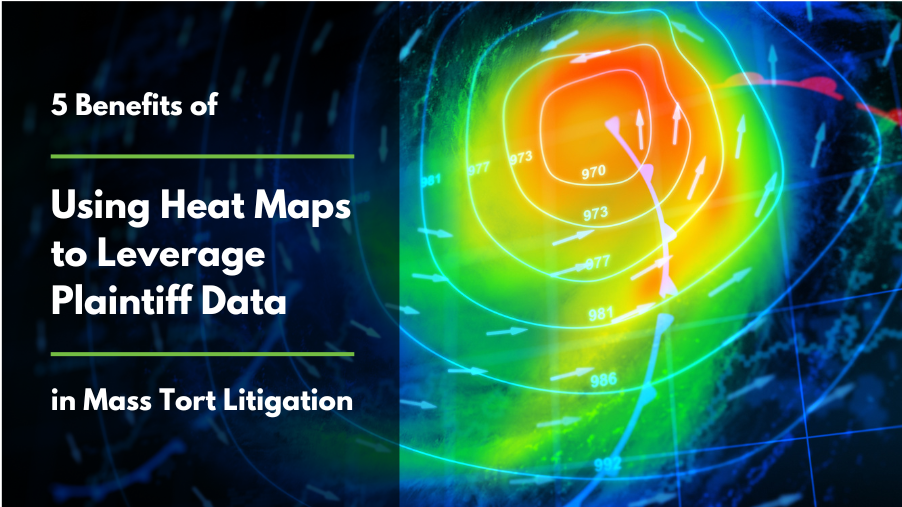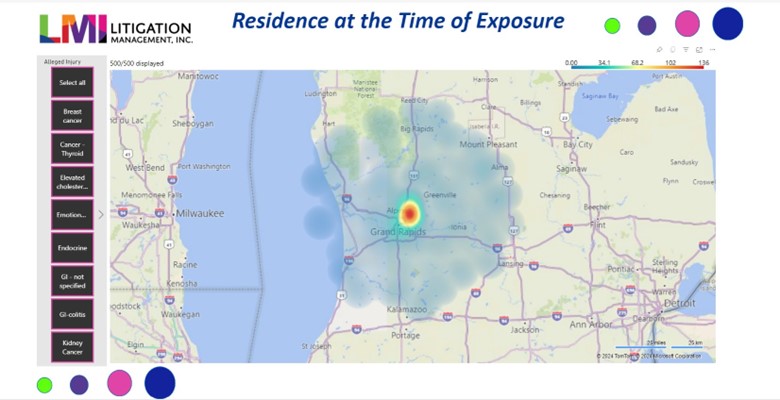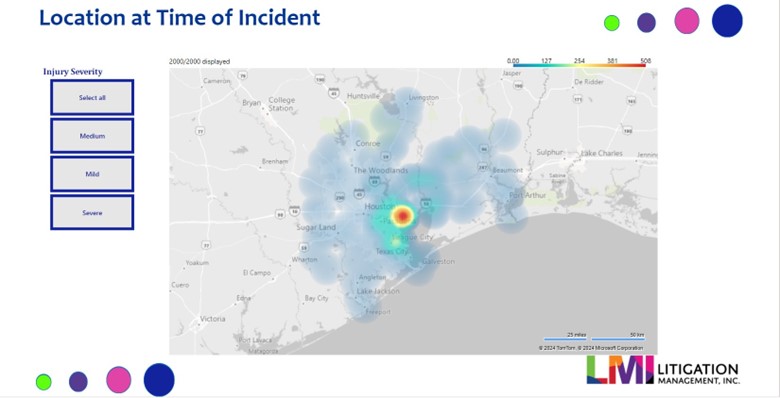
Defending product liability mass torts is inherently complex and often requires accurate data management. In matters involving complex data and a large volume of plaintiffs, heat mapping can be a powerful tool to transform plaintiff data by providing impactful visuals that a traditional table, line chart, or scattergram cannot provide. When data is managed in a centralized platform, the reporting can be even more powerful.
What is Heat Mapping?
A heat map (or heatmap) is a type of data visualization that displays aggregated information in a visually appealing way. Heat maps offer a visual representation of data where different values are represented using colors, helping to distinguish patterns and relationships. When data is complex, heat maps can simplify complicated information by transforming it into a two-dimensional format which can provide insights into trends, eliminating the need for an in-depth examination of raw data.
5 Benefits of Using Heat Maps to Visualize Plaintiff Data in Mass Torts
Heat maps are valuable tools in product liability mass tort litigation for several reasons:
1. Visual Representation
Heat maps provide a visual representation of data related to various aspects of the litigation, such as the geographic distribution of plaintiffs, the severity of injuries, types of claims, incident sites, residences, etc. This visual representation can make complex data easier to understand and serve as a basis from which strategic litigation decisions are made.
2. Identifying Patterns and Trends
Heat maps allow lawyers to identify patterns and trends within the data, such as concentrations of plaintiffs in specific geographic areas or commonalities among cases involving similar products or injuries. This analysis can help lawyers develop more effective litigation strategies, including identifying key issues and potential plaintiffs for targeted discovery efforts.
3. Risk Assessment
Heat maps enable lawyers to assess the risk associated with different aspects of the litigation, such as the potential exposure for defendants and the overall strength of the plaintiffs' claims. This risk assessment can inform settlement negotiations, trial preparation, and resource allocation throughout the litigation process.
4. Resource Allocation
By visualizing the distribution and magnitude of cases across different jurisdictions and categories, heat maps help lawyers allocate resources more efficiently. For example, lawyers can prioritize their efforts and resources based on the concentration of cases in particular geographic areas or the severity of injuries associated with specific products.
5. Communication and Strategy Development
Heat maps serve as effective communication tools for lawyers, allowing them to convey complex information and analysis to clients, co-counsels, experts, and other stakeholders involved in the litigation. They facilitate collaboration and informed decision-making, enabling lawyers to develop and adjust litigation strategies based on a clear understanding of the underlying data and trends.
Overall, heat maps play a crucial role in product liability mass tort litigation by providing attorneys with valuable insights, facilitating data-driven decision-making, and enhancing the efficiency and effectiveness of the litigation process.
Types of Claimant Data in Mass Tort Litigation
• Demographics
• State(s) of residence at time of alleged exposure and/or injury
• Age brackets
• Types of injuries
• Severity of injuries
• Incident site(s)
• And more
Example Heat Map Reports for Mass Torts
The sample map below represents the residence of claimants at the time of exposure and displays filtering options for the type of alleged injury.

The sample map below represents the location of claimants at the time of the incident and displays filtering options for the severity of the alleged injury.

Data Experts in Mass Tort Litigation
With 40 years of experience, LMI’s data analysts excel at transforming claimant data into actionable insights. We provide support to navigate complex datasets with our innovative techniques and AI-powered technologies.
